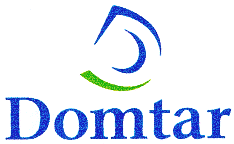John Dorfman is a Bloomberg.com columnist with a value-investing perspective. He recently wrote a
column on small stocks that fit his investing criteria. He says he likes small stocks because he has a better shot of finding a bargain amongs issues that are under the market cap necessary to get on Wall Street's radar.
A year earlier, he made seven picks that returned an average of 21 percent. Caught my attention right there. Dorfman backed up this claim with his list and results:
Here's the scorecard on last year's picks:
Gymboree Corp. (GYMB) was up 75 percent.
Perini Corp. (PCR) rose 57 percent.
Escala Group Inc. (ESCL), formerly Greg Manning Auctions Inc. (GMAI),
returned 50 percent.
United Fire & Casualty Co. (UFCS) gained 37 percent.
Metal Management Inc. (MTLM) inched up 5 percent.
America Service Group Inc. (ASGRE) dropped 24 percent.
Cal-Maine Foods Inc. (CALM) was the big loser, down 55 percent.Quite a bit of volatility on that list. Six out of seven positions hit big or missed big.
This year's list are another seven companies with market caps below $1 billion. Here's Dorfman's picks with analysis. I will follow with my thoughts on his choices, plus some small-to-medium-sized alternatives.
We'll start with Deckers Outdoor Corp. (DECK) of Goleta, California.
The company designs and markets footwear, such as Teva sandals and Ugg
boots.
Deckers stock has fallen 48 percent this year. My firm sold the stock
short in late 2004 at about $46, betting that it would go down. We
covered our position in April at about $26.
Attractively Cheap
Now that Deckers is down to less than $25, I find it attractive. That
price works out to 11 times earnings, 1.9 times book value (assets
minus liabilities per share) and 1.2 times revenue.
Deckers has debt equal to only 8 percent of stockholders' equity, and
it earned a stellar return of 24 percent on equity last year.
Safety Insurance Group Inc. (SAFT) sells auto insurance and other
property-and-casualty insurance in Massachusetts. The Boston-based
company's stock has risen 37 percent this year, yet still appears
attractively cheap at eight times earnings and one times revenue.
Safety had a combined ratio (claims plus expenses, divided by premiums
collected) of 91 percent last year, which is considered very good in
the insurance industry.
Steel Bargain
Next up is Novamerican Steel Inc. (TONS), based in Dorval, Quebec. It
produces steel tubing and flat-rolled steel.
Like many U.S. steel stocks, Novamerican is cheap -- it sells for 8
times earnings, 1.5 times book value and 0.5 times revenue. Unlike
many U.S. steel stocks, Novamerican has a strong balance sheet, with
debt only about 19 percent of equity.
After posting big gains in 2003-2004, Novamerican stock is down 31
percent this year. I own call options on these shares for some of my
more venturesome clients.
Fourth, I recommend Gold Kist Inc. (GKIS), a chicken producer based in
Atlanta. Like other chicken stocks, it suffers from Avian flu fears.
The stock was down 12 percent in October and 7.4 percent in November.
Gold Kist has turned a profit in three of the past four years, and
seems cheap to me at six times earnings, 1.8 times book value and 0.3
times revenue.
Fifth, I suggest KHD Humboldt Wedag International Ltd. (KHDH) of Hong
Kong. Until Nov. 1, the company was known as MFC Bancorp Ltd., and was
based in Austria. I have recommended it from time to time and
currently own it for one client.
Metal, Telecom and Eggs
Previously a merchant bank, KHD now owns an aluminum rolling mill in
Germany, operates a cobalt refinery in Uganda, and has a metal-trading
operation, MFC Commodities GmbH. The stock sells for 10 times
earnings, 1.2 times book value and 0.4 times revenue.
Premier Global Services Inc. (PGI), out of Atlanta, provides
conference-call and other telecommunications services to companies.
The stock has fallen 26 percent this year, which looks to me like an
overreaction to a minor earnings shortfall in the third quarter.
Finally, I would like to try again with Cal-Maine Foods, the big loser
from last year's list. The Jackson, Mississippi, company owns about 22
million hens and produces about 13 percent of the eggs sold in the
U.S.
Profitability has been spotty, with losses in four of the past 11
years. The shares peaked near $22 in December 2003, when the Atkins
diet was riding high. They have fallen all the way to $6.31.
Now that the shares have cracked, they sell for only six times
earnings, 1.3 times book value and 0.4 times revenue -- the sorts of
ultra-cheap multiples I like.Dorfman's first pick, DECK, seems like the worst pick. As I've blogged before, I am willfully fashion-ignorant. So when I've heard of Ugg boots, and know that they're passe, they could be as far gone as flannel shirts. Or acid-washed jeans. Maybe even as outmoded as parachute pants. I know so little of fashion that I can't even come up with good examples of stuff out-of-fashion. And I don't trust Dorfman to know this.
However, there have been a couple of recent articles at fool.com looking into DECK's woes.
Salim Haji tried to put a value on DECK, taking into account the passing fads of Uggs and DECK stock:
What is Deckers worth?
To answer my questions, I thought about Deckers' intrinsic value. The
company has three primary brands -- Ugg, Teva, and Simple. According
to its most recent press release, the company expects net sales for
2005 to be about $154 million for Ugg, $85 million for Teva, and $8
million for Simple. In my mind, the only brand that has any real,
sustainable long-term value is the Teva brand. I see Ugg as a passing
fad with minimal staying power. With less than $10 million in sales
and no growth, Simple is too small to matter. That leaves the real
value of the company in Teva, which outdoor enthusiasts recognize as a
premier brand.
According to the company's 2004 10-K, Teva generates about $25 million
in cash flow on $88 million of sales, which are essentially flat. This
is a stable, healthy business that spins off significant cash. Roughly
speaking, we can value that brand at eight times cash flow (a typical
multiple for this kind of business), or about $200 million. To me,
this is what the brand would be worth to a competitor like Timberland
(NYSE: TBL) or Reebok (NYSE: RBK), companies that could simply roll
the business into their existing infrastructure. That figure would
also be close to what the brand would be worth to a private equity
firm, which could run Teva as a standalone business with minimal
corporate overhead.
Ugg is the key
To unlock this value, the strategy would be to milk the Ugg brand. In
2004, Ugg generated about $32 million in cash flow on just more than
$115 million in sales. Going forward, I would very conservatively
expect the brand to be able to generate at least that much as sales
drop off over a couple of years.
According to its 10-K, Deckers today spends about $20 million in
corporate overhead, and it is not allocated to any product line. This
amount is probably for executive salaries, corporate accountants,
corporate advertising and promotion, and a host of other costs to
support the three product lines. Most, if not all, of these
expenditures would not be required if a competitor or a private equity
firm bought Deckers and ran it as the Teva brand. However, shutting
down these corporate offices would require a one-time cash outlay for
restructuring costs.
When would Deckers become attractive?
So at what point does Deckers become attractive as a takeover
candidate for the Teva assets? If we make the simple and conservative
assumption that the cash generated from Ugg would be adequate to cover
required restructuring costs, and we ignore Simple because it is too
small to matter, the value of the company is about $200 million. If I
were doing the deal, I would want a solid margin of safety -- I would
start to become interested at $150 million, and my interest would grow
from there as the price fell. With about 12.5 million shares
outstanding and essentially no debt on the balance sheet, Deckers has
an equity value of about $12 a share, given the $150 million figure.
At anything below $10 per share, this company becomes a prime takeover
candidate.
Though the stock appears to have temporarily stabilized at around $18
per share, I'm watching this one closely. Three years ago, the stock
was trading below $5 per share. If it gets back down anywhere close to
that level, I may again take a position in Deckers. Mr. Market's
behavior opens up opportunities on both the long and short sides of a
stock. I've been successful with Deckers on the short side, and I'm
hoping an opportunity will soon arise on the long side.DECK has risen quickly to near $30 a share since this piece appeared on November 18, 2005. That makes me sceptical of a buying opportunity here.
DECK also doesn't seem to gel with Dorfman's small-stock thesis. He says he is looking for stocks followed by fewer investors, but DECK is followed by plenty of analysts, sites like fool.com, and trades at significant volume on the NASDAQ.
Fashion is fickle by its nature. I think DECK's fundamental numbers reflect their pas success with Ugg.
SAFT seems an excellent small stock choice. According to its Morningstar Report, SAFT scores an A- for growth and an A for profitability. It's PEG is an enticing 0.5. SmartMoney says its net profit of 12.2% beats the competition, while its price/cash flow is a low 6.9, and its ROE an attractive 24.6%. Among competitors, only Mercury General (MCY) garnered higher Morningstar grades. MCY, with a market cap of $3.2B, would have been screened out under Dorfman's criteria. Either seem worth a further look.
TONS is definitely an under-the-radar pick that doesn't even warrant a mention in this
series of
recent fool.com articles on steel picks. The pieces focus on huge players, like Korea's largest manufacturer, POSCO (PKX) and the Netherlands' Mittal (MT). One smaller player they do like is Steel Dynamics (STLD). Morningstar likes it too, giving it a growth grade of A+, profitability grade of A, and financial health grade of B. Favorable numbers against the competition include a PEG of 0.64, price/cash flow of 4.5, 5-year earnings growth of 59.33%, and net profit of 10.3%. Again, STLD's market cap of $1.5B kept it just off of Dorfman's radar. All of these SmartMoney numbers surpass the available figures for TONS.
GKIS and CALM are two picks that fly in the face of avian flu fears. We've got both the chicken in GKIS, and the egg in CALM.
Lined up against its competition, GKIS makes top marks for net profit margin (4.80%), forward P/E (6.5), PEG (0.77), and ROE/ROA (32.10%/13.40%). So what's the problem here? GKIS laid an
earnings egg last quarter:
GoldKist Gets the Kiss-Off
By Stephen D. Simpson, CFA
November 18, 2005
Having heard from the likes of Tyson Foods (NYSE: TSN) and Pilgrim's
Pride (NYSE: PPC), I think most investors already know the score in
the poultry world. Feed prices (a key cost input) are down, but
poultry pricing has fallen off as well. The latest pullet producer to
report, GoldKist (Nasdaq: GKIS), seems to have suffered a real clunker
of a quarter.
Sales were down 10% as reported, and even adjusting for the extra week
in the year-ago quarter renders a negative 3% result for this quarter.
While the company did manage to ship more pounds of poultry, the drop
in realized prices more than overwhelmed that. As you might suspect,
operating leverage cuts both ways, and profitability dropped along
with revenue. Operating margin worsened by a bit, and net income
dropped more than one-fourth from the year-ago level.
GoldKist management didn't seem to have a whole lot of new things to
say. Feed prices were lower, but forward contracts kept them from
realizing the full benefit. Poultry export demand is still very
strong, but more sluggish demand in the food-service chain hurt
domestic results. Remember, GoldKist has a good-sized private label
operation, selling to companies like Wal-Mart (NYSE: WMT), Albertsons
(NYSE: ABS), Wendy's (NYSE: WEN), and SYSCO (NYSE: SYY). If there's
really weakness in the demand channel, GoldKist definitely feels it.
What I don't understand is the apparent magnitude of the earnings miss
this quarter. According to what I see online and in print, the average
estimate for the quarter was $0.77, whereas the company reported
$0.49. Perhaps I'm missing something somewhere (like analysts using an
operating number instead of a net number), but boy, does that look
like an unusually large miss for this sort of business.
At the bottom line, this is another company with very little control
over its costs (feed and energy, for instance) or final pricing.
That's a tough foundation from which to build a sustainable
competitive advantage and long-term shareholder value. While the stock
looks pretty darn cheap on a P/E basis, I'd make certain that "E" part
won't get pecked away before putting any of my nest egg into this
stock.CALM may have bottomed out. Dorfman picked it again after suffering a 55% drop, reflected in the F grade for growth by Morningstar. But the other grades aren't so bad; CALM gets a B- for profitability and an A for financial health. I think a contrarian play, against the bird-flu scare could be a profitable long-term play. And Dorfman seems genuinely excited about CALM's bargain-basement price. Can the price really get any worse...
*cough*
*cough*
We're left with KHDH and PGI.
KHDH has some SmartMoney numbers that make it stand out clearly from its competition: 5-year sales growth (51.00%), price/sales (0.30), price/cash flow (6.40), ROE/ROA (18.00%/7.80%). Seems very solid on this very cursory review.
PGI has some decent numbers among some less savory ones: price/sales (1.10), price/cash flow (6.50), ROE/ROA (19.10%/11.10%). Morningstar grades PGI a B for growth, a D for profitability, and a B- for financial health. Dorfman is not saying this is a wonderfully run company. In spite of missing earnings forecasts, PGI has grown sales and earnings very nicely since 2001, as well as upped its free cash flow from $18M in 2002 to $41M in 2003, from $58M in 2004 to $72M in the trailing twelve months.
Let's wrap up this never-ending post. I appreciate John Dorfman's picks, but I would make some changes, even going so far as to expand the criteria beyond the $1B limit. I'm going to keep tabs on a modified Dorfman small stock list that leaves off DECK, TONS, and GKIS.
The final list, with current price as I type this: SAFT ($43.70), MCY ($58.85), STLD ($34.94), KHDH ($21.75), PGI ($8.21), CALM ($6.80).
















